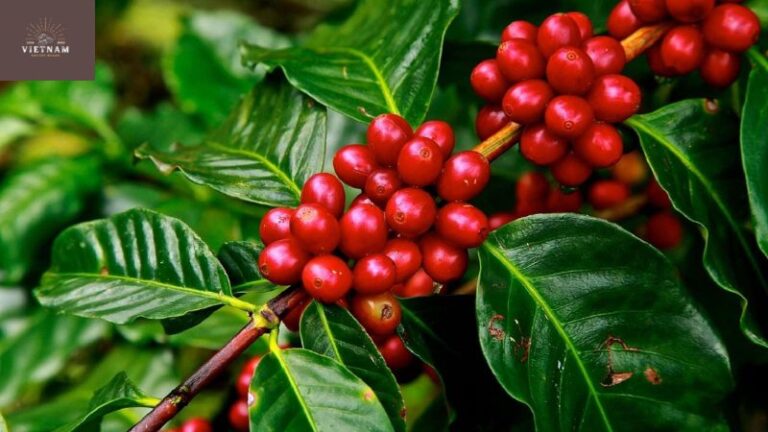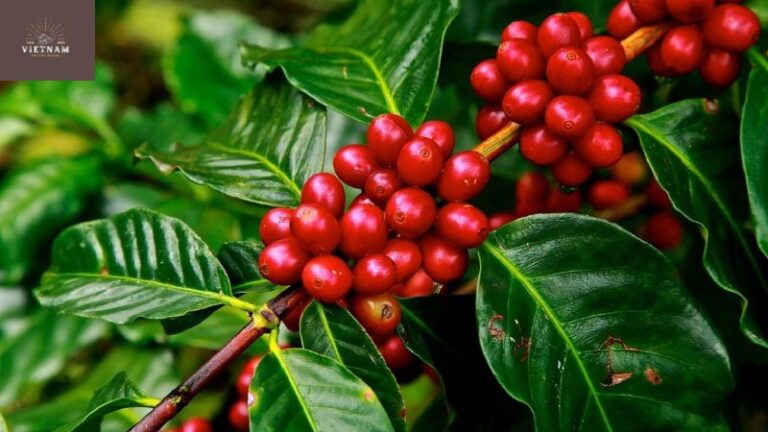I’ve been involved in the coffee industry for years, and let me tell you, coffee production in Papua New Guinea (PNG) is a fascinating story.
From its humble beginnings in the 1920s with Jamaican Blue Mountain Coffee seeds, to the challenges faced by the industry today, there’s so much to explore.
In this article, we’ll dive into the history of coffee production in PNG, the different types of coffee grown, the challenges the industry faces, and the efforts being made to improve quality.
So grab a cup of joe and let’s get started!
Key Takeaways
- Coffee production in Papua New Guinea has a long history, dating back to the 1920s, with commercial production starting in the late 1920s.
- The industry experienced significant growth in the 1960s and 1970s, but declined in the 1980s, shifting towards small coffee farmers.
- Approximately 87,000 hectares of land are dedicated to coffee cultivation in Papua New Guinea, with the majority of coffee grown in the highlands.
- Arabica coffee dominates the industry, with 95% of production being washed mild highland coffee.
History of Coffee Production in PNG

“In the late 1920s, Costa Rica’s coffee cultivation process started commercial coffee production in Papua New Guinea with the establishment of 18 commercial coffee plantations. Since then, the coffee industry in PNG has played a significant role in the country’s cultural heritage. Coffee is deeply ingrained in the traditions and daily lives of the people, with coffee ceremonies being an important social gathering.”
However, the industry has faced challenges, especially in recent years. Climate change has had a significant impact on coffee production, with rising temperatures and unpredictable weather patterns affecting the quality and yield of the coffee crops. This has led to decreased production and income for coffee farmers.
Despite these challenges, the coffee industry in PNG continues to thrive, thanks to the resilience and determination of the coffee growers. Efforts are being made to adapt to the changing climate and implement sustainable practices to ensure the long-term viability of coffee production in the country.
Through these efforts, the cultural heritage and economic significance of coffee in PNG can be preserved for future generations.
Papua New Guinea boasts a diverse range of coffee types, with each variety showcasing unique flavors and characteristics that are cultivated using a blend of traditional methods and innovative Rwandan coffee growing techniques, resulting in a truly exceptional coffee experience.
Coffee Types in Papua New Guinea

I really enjoy the variety of coffee types available in Papua New Guinea. When it comes to coffee varieties, PNG offers a unique and diverse selection that caters to different tastes and preferences. Here are some of the coffee types you can find in this beautiful country:
- Large estate coffee produced by the wet process, known for its high quality.
- Small farmer coffee, organically grown, offering a distinct flavor profile.
- Village Premium Morobe, a well-established variety produced in the Morobe Province.
- Arabica coffee, which dominates the industry and is known for its smooth and balanced flavors.
However, the impact of climate change poses a threat to the coffee industry in Papua New Guinea. Rising temperatures and changes in rainfall patterns can affect the growth and quality of coffee crops. It is crucial for the industry to adapt and implement sustainable practices to mitigate the effects of climate change and ensure the future of these unique coffee varieties.
The diverse coffee types found in Papua New Guinea exhibit a unique flavor profile and character, influenced by the rich coffee production dynamics in Indonesia, which have inspired a distinct approach to cultivation, processing, and trade in Papua New Guinea’s vibrant coffee industry.
When exploring the diverse coffee types in Papua New Guinea, it is important to consider the influence of sustainability in Ethiopia’s coffee production, as the principles and practices employed in Ethiopian coffee farming can serve as a source of inspiration for Papua New Guinean coffee growers striving to cultivate exceptional beans in an environmentally conscious and socially responsible manner.
Challenges Faced by the Coffee Industry
One of the challenges faced by the coffee industry is the poor infrastructure, which hampers sales and leads to revenue loss.
In addition to this, the industry also faces other significant challenges. The impact of climate change has become a growing concern, as changing weather patterns affect coffee cultivation and production. Rising temperatures, irregular rainfall, and increased pest and disease outbreaks pose a threat to the quality and quantity of coffee produced.
Furthermore, the market demand for specialty coffee is on the rise, with consumers seeking unique and high-quality beans. Meeting this demand requires the industry to adapt and innovate, ensuring that they are able to produce specialty coffee that meets international standards.
Overcoming these challenges will require investment in infrastructure, sustainable farming practices, and continuous research and development.
The coffee industry in Papua New Guinea grapples with various challenges, but one potential solution lies in exploring the benefits of sourcing high-quality beans from Kenya’s farms to uplift the country’s coffee production and overcome these obstacles.
Incentive Schemes for Coffee Farmers

The Freight Subsidy Scheme subsidizes 40% of airfreight for coffee farmers, benefiting them by reducing transportation costs. This government initiative provides crucial financial support to the coffee industry in Papua New Guinea. As a coffee farmer myself, I have experienced the positive impact of this scheme firsthand.
Here are three ways in which the Freight Subsidy Scheme has helped us:
Increased profitability: By subsidizing a significant portion of our transportation costs, the scheme allows us to sell our coffee at a competitive price in the market, ultimately increasing our profitability.
Access to wider markets: With reduced transportation costs, we are able to expand our reach and access new markets both domestically and internationally. This not only boosts our sales but also promotes the reputation of Papua New Guinea coffee.
Encourages growth and investment: The financial support provided by the scheme encourages small coffee farmers like me to invest in our farms, improve our practices, and strive for higher quality coffee. This, in turn, contributes to the overall growth and sustainability of the industry.
Overall, the Freight Subsidy Scheme is a valuable government initiative that plays a crucial role in supporting coffee farmers and ensuring the success of the Papua New Guinea coffee industry.
Role of Research in Coffee Production
Research plays a crucial role in improving the quality and efficiency of our coffee cultivation methods. As a coffee farmer, I have witnessed firsthand the benefits of coffee research in our industry.
One of the significant challenges we face is the impact of climate change on coffee production. Research helps us understand how changing weather patterns affect our crops and enables us to develop strategies to mitigate these effects.
Through research, we have been able to identify more resilient coffee varieties that can withstand droughts and diseases. Additionally, research has led to the development of innovative farming techniques and technologies that improve our productivity and reduce our environmental footprint.
Without ongoing research, we would struggle to adapt to the changing climate and ensure the long-term sustainability of our coffee farms.
Quality Control Measures in the Coffee Industry
As a coffee farmer, I actively participate in implementing quality control measures to ensure the excellence of our industry.
Maintaining coffee quality standards is of utmost importance to us, as it directly impacts the reputation and value of our coffee. We understand the significant impact that pests and diseases can have on coffee quality, and therefore, we take proactive measures to prevent and manage them effectively.
Here are four key steps we take to maintain the highest quality of our coffee:
- Regular monitoring and inspection of coffee farms for signs of pests and diseases.
- Implementing integrated pest management strategies, including the use of organic and environmentally friendly methods.
- Timely and appropriate treatment of infected coffee plants to minimize the spread of diseases.
- Conducting rigorous quality checks at every stage of the production process to ensure only the finest beans make it to the market.
International Funding for Coffee Research
With international funding, I’ve enhanced my coffee farming practices and contributed to ongoing research in the industry.
The impact of research on coffee production in Papua New Guinea is significant. International funding has allowed for the development of advanced techniques and technologies, improving the quality and yield of coffee crops.
Through research, we’ve addressed various challenges faced by coffee farmers, including pests, diseases, and changing climatic conditions. This has increased productivity and profitability for coffee growers.
International funding has also supported the establishment of laboratories and tasting panels, ensuring that Papua New Guinea’s coffee meets international quality standards.
Continuous research in the industry benefits individual farmers like myself and contributes to the overall growth and sustainability of the coffee industry in Papua New Guinea.
Improving Coffee Quality Through Wet Factories
When it comes to improving the quality of coffee produced in Papua New Guinea (PNG), wet factories have emerged as a game-changer.
These factories play a crucial role in promoting sustainability and implementing technology advancements in the coffee industry.
As a knowledgeable and experienced coffee producer, I have witnessed firsthand the positive impact of wet factories on the overall coffee quality.
By utilizing advanced processing techniques, such as wet processing, the factories ensure that the coffee cherries are properly washed and fermented, resulting in a cleaner and more vibrant cup of coffee.
Moreover, wet factories also prioritize environmental sustainability by efficiently managing water usage and properly disposing of waste.
Through the implementation of these technological advancements, PNG is able to meet international standards of quality while safeguarding the future of its coffee industry.
Training and International Standards in PNG Coffee Production
By implementing rigorous training programs and adhering to international standards, I have seen firsthand how the coffee industry in PNG is able to consistently produce high-quality beans.
Training programs for coffee farmers play a crucial role in ensuring that they have the necessary skills and knowledge to cultivate and process coffee effectively. These programs cover a wide range of topics, including proper planting techniques, pest and disease management, and post-harvest practices.
Additionally, coffee farmers in PNG are encouraged to implement international quality standards in their production processes. This includes following strict guidelines for harvesting, processing, and storing coffee beans. By doing so, they are able to meet the stringent requirements of the international market and produce coffee that is highly sought after for its exceptional flavor and aroma.
Frequently Asked Questions
Conclusion
In conclusion, coffee production in Papua New Guinea has a rich history and faces various challenges in today’s industry. However, efforts are being made to support smallholder farmers through incentive schemes and research initiatives.
Quality control measures and adherence to international standards are prioritized to maintain the high quality of PNG coffee in the global market. With the support of international funding and the establishment of wet factories, improvements are being made to enhance coffee quality.
Through training and collaboration, the future of coffee production in PNG looks promising.




